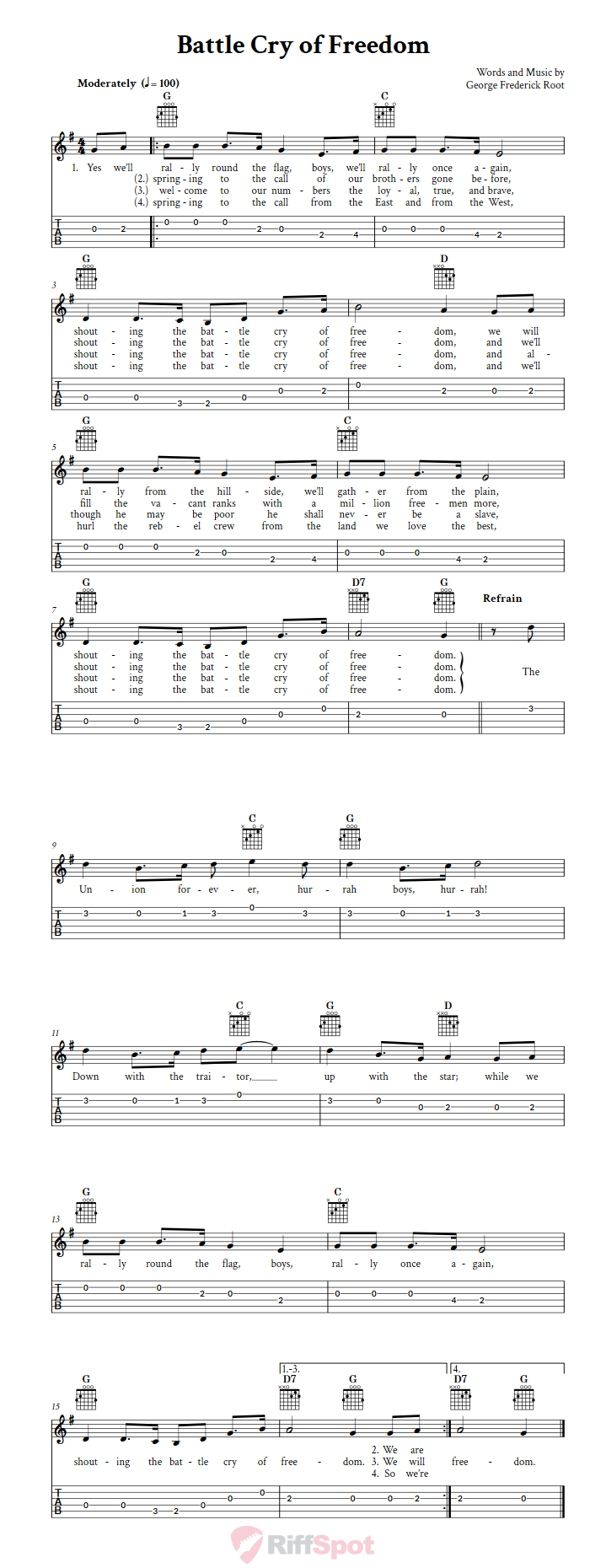

One model for the popular song grew out of these ballads. The songs of the Civil War were indebted to the traditional, often sentimental ballads written and published during the 1830's, 1840's and 1850's.

Hamm's observation could serve as the theme for this paper. Indeed, this music was so intimately involved with the events of the time that it became part of them. The Civil War has left a heritage of music that reflects those times in the most vivid way. Charles Hamm in Yesterdays: Popular Song in America acknowledges that: As reflections of this conflict these songs provide a more human approach to and understanding of the Civil War era. These songs expressed or came to express a multitude of emotions associated with this great conflict: patriotism, martial pride, death, homesickness, loneliness, love, and hope. The songs of the Civil War contain distinct echoes of that era. While playing this song, you have to believe that you are chanting a real battle cry for freedom, thus you will play loud and proud.POPULAR SONGS OF THE CIVIL WAR By Ramona Garcia, Fairfield, Ct., USA These solis have to be played loud and outward towards the crowd because during their solis they are the only wind instruments playing. The clarinets and the low brass both have a soli that is played along with the percussion section. Although both versions are very different, they both use a snare drum to keep a steady tempo, have many solis, and have the same idea of playing, or singing in this case that should be articulated greatly and played together.Īll in all, for our band's sake, we should play this piece with strength and great articulation, while realizing the history behind this amazing piece. However when you listen to the instruments accompanying the Union version, the snare drum stands out in the marching pace of the song, along with the viola and violin, and even some wind instruments such as the clarinet. As you listen closely, the Confederate version has more of a country-styled beat to it where you can easily identify the banjos and the fiddles. The last major difference between the Confederate version and the Union version was the type of instruments played. They brought about the rallying towards their flags, how they were going to demolish the opposition/traitors in battle, and how they were going to stand unified, arm and arm, to "save" the country. Although the lyrics varied greatly between both versions, the ideas were still the same. You can obviously can see that this song alone brought a war upon itself between both sides just by the lyrics written. The Union wrote about their idea of freedom for being the "freedom" of slaves, while the Confederacy misinterpreted the lyrics and wrote about their "freedom" from the terrible north. For the Union version, many references were made from points about their geographical differences with the south, to the use of the word traitors was very strongly placed in one stanza of the song.

The words throughout the Confederate version are more slang, a common linguistic dialect that made the south even more different than the north. In the Confederate version, there are many references to the "Dixie Land" being far more superior than the north. You can obviously tell the Union version is more loyal to the north, whereas the Confederate version is more loyal to the south, but the song shows the various cultural differences between to regions of the same country. This song was played on the way into the battle field in an oblivious way as if they did not know the battle were going to be so gory and bloody.Īnother main difference between the Confederate and Union versions was the lyrics, including different choruses. If you listen and observe the lyrics, the Battle of Freedom shows such horrible and harsh lyrics towards the opposition in a cheery way. On the other hand if you were from the north and fought for the Union army, the song was played in a marching tempo. If you were from the south, you sung the Battle Cry of Freedom in a more up tempo and lively manner. This musical piece varied based on the location of where you were from, in that the instruments that accompanied the armies were different, the tempo of the song was different, and even the lyrics were different. It is a musical piece written by George Root to show his strong support to the Union and Lincoln's brave and bold leadership. The Blue and the Grey was a patriotic and nationalist, depending what side you were on, folk song sung by the men of both the Union and the Confederate Army.


 0 kommentar(er)
0 kommentar(er)
